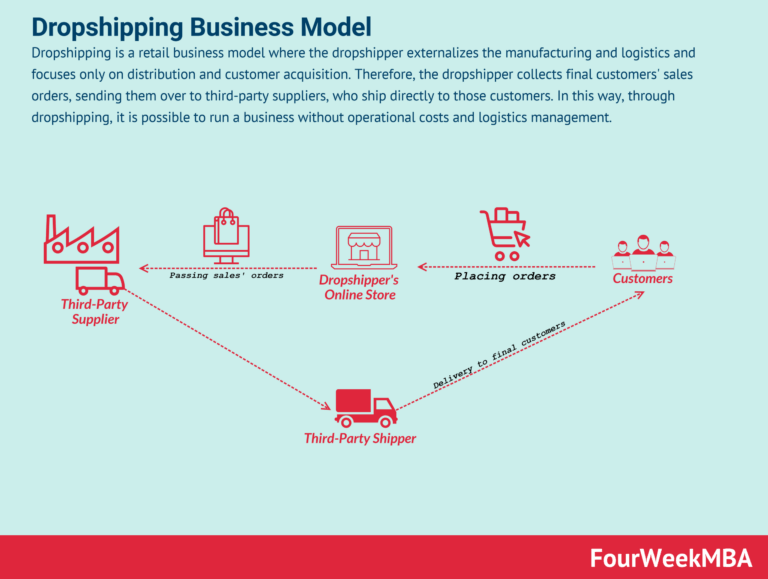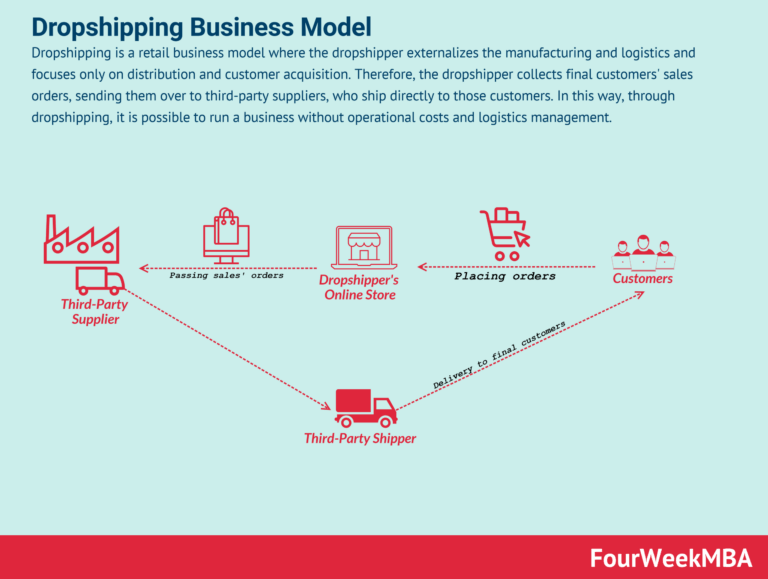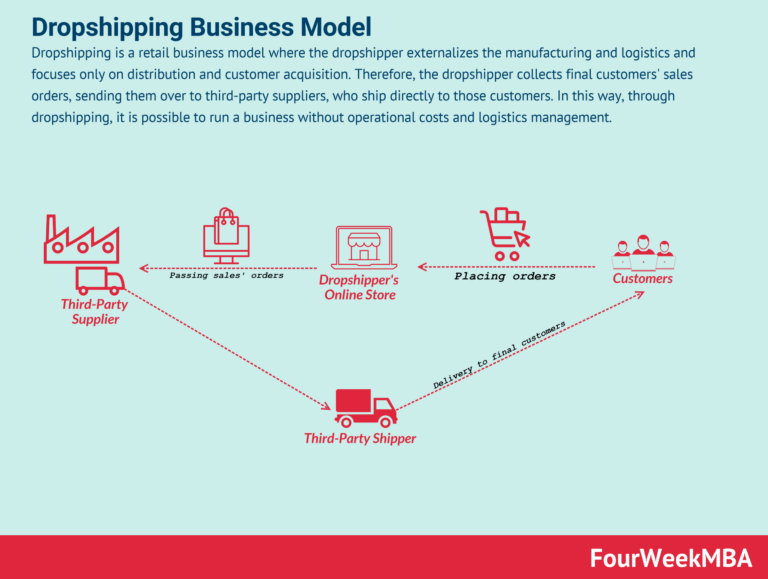What Is Dropshipping and How Does It Work? (2025)
Your Complete Guide to t-shirt dropshipping
Welcome to Your Entrepreneurial Journey
Congratulations on taking the first step toward starting your own business! The ambition to create something unique and profitable is a commendable pursuit, and in today’s digital landscape, there has never been a better time to dive into the world of e-commerce. If you’ve been dreaming of launching your own t-shirt brand, you’re in the right place.
What is Dropshipping?
At its core, dropshipping is a retail fulfillment method that allows you to sell products without holding any inventory. When a customer makes a purchase from your online store, the product is shipped directly from the supplier to the customer. This means you can focus on marketing and growing your brand while avoiding the headaches of inventory management and upfront costs. The appeal of dropshipping lies in its low startup costs and flexibility. You can launch your t-shirt business with minimal financial risk, test various designs, and scale your operations as you grow.
What You Will Learn
This comprehensive guide will serve as your roadmap to successfully navigating the t-shirt dropshipping landscape. We’ll cover everything from selecting a niche that resonates with your audience to choosing the right dropshipping partner that aligns with your business goals. You’ll learn how to design eye-catching t-shirts, set up your online store, and effectively market your products to attract customers.
Additionally, we’ll walk you through the fulfillment process, ensuring you understand how to deliver a seamless experience to your buyers. We’ll also discuss strategies for maximizing your profit margins and building a brand that stands out in a crowded market.
Turning Your Dreams into Reality
Remember, every successful entrepreneur started with a single step, just like you are today. With determination, creativity, and the right strategies in place, you can turn your passion for t-shirts into a thriving business. Whether you’re looking to earn a side income or build a full-fledged brand, this guide will equip you with the knowledge and tools to embark on your entrepreneurial journey.
So, let’s get started! Your dream of running a successful t-shirt dropshipping business is within reach, and together, we’ll make it a reality.
What You’ll Learn In This Guide
- Your Complete Guide to t-shirt dropshipping
- How Does Dropshipping Actually Work? A Step-by-Step Breakdown
- The Pros and Cons of Dropshipping: Is It Right for You?
- Step 1: Finding a Profitable Niche and Winning Products
- Step 2: Choosing the Right Dropshipping Suppliers
- Step 3: Building Your Online Store
- Step 4: Marketing Your Dropshipping Business to Get Sales
- Common Mistakes to Avoid as a Beginner
- Frequently Asked Questions (FAQs) about t-shirt dropshipping
- Conclusion: Your Next Steps to Launching Your Business
- Important Disclaimer
How Does Dropshipping Actually Work? A Step-by-Step Breakdown
Understanding the Dropshipping Process: A Step-by-Step Breakdown
Starting a t-shirt dropshipping business can be an exciting venture, especially for aspiring entrepreneurs looking to minimize their investment. The dropshipping model allows you to sell products without holding any inventory. Here’s how it works, broken down into clear steps:
- Customer Places an Order on Your Online Store
-
Imagine your online store as a digital storefront. When a customer finds a t-shirt they love and decides to purchase it, they place an order directly on your website. This step is crucial as it initiates the entire dropshipping process.
-
You Receive the Payment
-
Once the customer places their order, they make a payment through your online store. This payment typically includes the cost of the t-shirt plus any applicable shipping fees. At this stage, the funds are in your account, and you retain the revenue until you fulfill the order.
-
You Forward the Order to Your Supplier

-
After receiving the payment, the next step is to place the order with your chosen dropshipping supplier. This could be a print-on-demand service like Printful or Printify, where you can customize the t-shirts. You provide the supplier with the necessary details, such as the product type, design, and shipping information. This process is often automated through integrations with e-commerce platforms like Shopify or WooCommerce, making it seamless and efficient.
-
The Supplier Ships the Product Directly to the Customer
- Once the supplier receives your order, they handle the printing and shipping of the t-shirt directly to the customer. This means that your role as the retailer is primarily as a middleman—facilitating the transaction without ever touching the product. The supplier will take care of packing and shipping, ensuring that the product reaches your customer in a timely manner.
The Flow of Money and Goods
To visualize the flow of money and goods in a dropshipping model, think of it as a relay race. You are the runner who starts the race (the customer), passes the baton (the order) to the supplier, who then runs to the finish line (delivering the product to the customer).
- From Customer to You: The customer pays you for the t-shirt. This is your revenue.
- From You to Supplier: You pay the supplier the wholesale price of the t-shirt, which is typically lower than the retail price you charged the customer. This difference is your profit margin.
- From Supplier to Customer: The supplier ships the t-shirt directly to the customer, completing the transaction.
Benefits of the Dropshipping Model
- Minimal Upfront Costs: You don’t need to invest in inventory, which means lower financial risk.
- No Inventory Management: The supplier takes care of all storage, packaging, and shipping, allowing you to focus on marketing and sales.
- Flexibility: You can easily test new designs and products without the risk of unsold inventory.
- Scalability: As your business grows, you can expand your product offerings and reach more customers without worrying about fulfillment logistics.
Conclusion
Starting a t-shirt dropshipping business can be a rewarding journey, especially when you understand how the model works. By acting as the digital storefront and connecting customers with suppliers, you can create a profitable online business with minimal investment. Embrace the process, and remember that each step is a learning opportunity on your path to success!
The Pros and Cons of Dropshipping: Is It Right for You?
| ### Advantages of Dropshipping (Pros) | Challenges of Dropshipping (Cons) |
|---|---|
| 1. Low Startup Costs: You don’t need to invest heavily in inventory or warehouse space. | 1. Low Profit Margins: Competition can drive prices down, resulting in lower profit margins. |
| 2. No Inventory Management: The supplier handles storage and shipping, freeing up your time for marketing and customer service. | 2. High Competition: The ease of entry means many sellers may be offering similar products. |
| 3. Wide Product Selection: You can offer a diverse range of products without the risk of unsold inventory. | 3. Reliance on Suppliers: Your business depends on the reliability and quality of third-party suppliers. |
| 4. Flexible Location: You can run your business from anywhere with an internet connection. | 4. Shipping Complexities: Managing shipping times and costs can be challenging, especially when using multiple suppliers. |
| 5. Easy to Scale: You can easily add new products and expand your offerings without worrying about logistics. | 5. Customer Service Challenges: Handling returns and customer inquiries can be complicated when you don’t have direct control over fulfillment. |
| 6. Test New Products Quickly: You can experiment with new designs and trends without significant financial risk. | 6. Branding Limitations: Customization options may be limited, making it harder to build a unique brand identity. |
| 7. Automation Opportunities: Many platforms offer integrations with e-commerce sites, allowing for automation in order processing and fulfillment. | 7. Quality Control Issues: Since you don’t see the products before they are shipped, quality can vary, leading to customer dissatisfaction. |
Expanding on the Advantages
Low Startup Costs
One of the most compelling reasons to consider dropshipping, especially for beginners, is the minimal financial risk involved. Traditional retail models require substantial upfront investment in inventory, which can be a barrier to entry for many aspiring entrepreneurs. In dropshipping, you can start with little more than a website and a marketing plan. This allows you to allocate resources to branding and customer acquisition rather than worrying about unsold stock.
No Inventory Management
Managing inventory can be a logistical nightmare. With dropshipping, you can bypass this headache entirely. Your supplier takes care of storing, packing, and shipping products directly to your customers. This allows you to focus on growing your business rather than being bogged down with the operational details. For beginners, this means you can spend more time learning about marketing strategies and customer engagement.
Wide Product Selection
Dropshipping gives you the flexibility to offer a vast array of products without the risk of being stuck with unsold inventory. This is especially advantageous in the t-shirt market, where trends can change rapidly. You can easily add new designs or seasonal items to your store, allowing you to keep your offerings fresh and appealing to your audience.
Addressing the Challenges
Low Profit Margins
While the low startup costs are enticing, aspiring entrepreneurs should be aware that dropshipping often comes with thinner profit margins. The competition is fierce, and many sellers may undercut prices, making it challenging to maintain profitability. To counteract this, focus on building a strong brand identity and offering unique designs that can justify higher price points.
High Competition
The accessibility of dropshipping means that many people can enter the market easily, leading to a saturated environment. It’s essential to differentiate yourself from competitors. Consider focusing on niche markets or creating unique designs that cater to specific customer interests. Engaging marketing strategies, like social media campaigns and influencer partnerships, can also help you stand out.
Reliance on Suppliers
Your business’s success largely depends on the quality and reliability of your suppliers. If they fail to deliver quality products or ship orders on time, it can lead to negative customer experiences and damage your brand reputation. Conduct thorough research to choose reputable suppliers and maintain open communication to address any issues that may arise.
In conclusion, dropshipping can be a great way to start an online t-shirt business with minimal investment. However, it is crucial to be aware of the challenges that come with it. By strategically navigating these pros and cons, you can build a successful dropshipping venture that resonates with your target audience and stands out in a crowded marketplace.
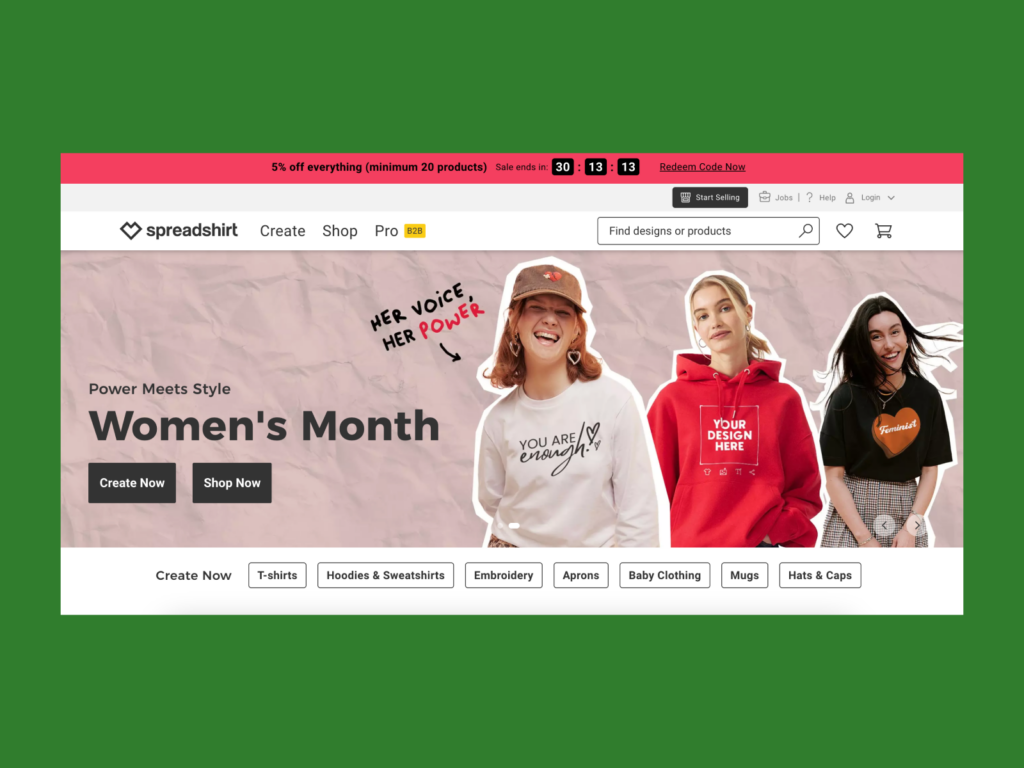
Step 1: Finding a Profitable Niche and Winning Products
What Makes a Good Niche?
Finding the right niche is crucial for the success of your t-shirt dropshipping business. A good niche should meet several criteria:
-
Passion and Interest: Choose a niche that you are passionate about or have a strong interest in. This will keep you motivated and engaged when running your business.
-
Market Demand: Look for niches that have a proven demand. Use tools like Google Trends to see if people are searching for products related to your niche. A growing trend can indicate a profitable market.
-
Target Audience: Identify your target audience. Understand their demographics, preferences, and pain points. This knowledge will help you tailor your designs and marketing strategies effectively.
-
Competition Analysis: A niche with moderate competition is ideal. Too much competition means it will be hard to stand out, while too little may indicate a lack of demand. Use platforms like Etsy or Amazon to analyze competitors and their offerings.
-
Profit Margins: Ensure that your niche allows for healthy profit margins. Consider the costs of production, shipping, and marketing when calculating potential profits.
How to Brainstorm Niche Ideas
Brainstorming niche ideas can be both exciting and overwhelming. Here are some actionable methods to help you generate ideas:
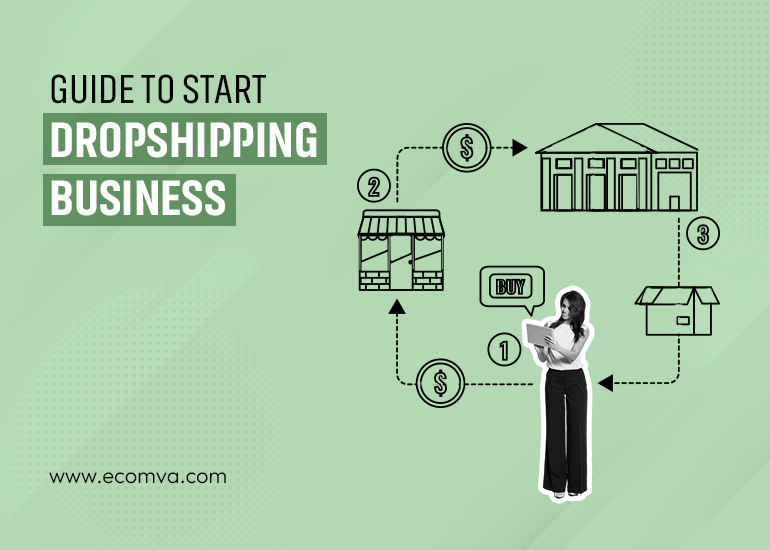
-
Personal Interests and Hobbies: Start by listing your interests, hobbies, or skills. For example, if you love hiking, consider creating t-shirts with hiking-related designs.
-
Social Media Exploration: Browse social media platforms like Instagram, Pinterest, and TikTok. Pay attention to trending hashtags and popular posts. Look for themes or categories that resonate with users.
-
Online Communities and Forums: Visit platforms like Reddit or Facebook groups related to your interests. Engage with community members to understand their needs and preferences. This can provide insights into potential niche ideas.
-
Keyword Research: Use tools like Ubersuggest or Ahrefs to explore keyword ideas. Look for long-tail keywords related to t-shirts that indicate specific interests or needs, such as “funny cat t-shirts” or “motivational fitness shirts.”
-
Seasonal and Trend-Based Ideas: Consider seasonal trends or upcoming events. For instance, holidays, awareness months, or pop culture events can inspire timely t-shirt designs.
-
Competitor Analysis: Analyze successful t-shirt brands and their niches. Look for gaps in their offerings where you could introduce unique designs or themes.
Validating Your Niche
Once you have brainstormed potential niches, it’s essential to validate them before investing time and resources. Here are some effective validation strategies:
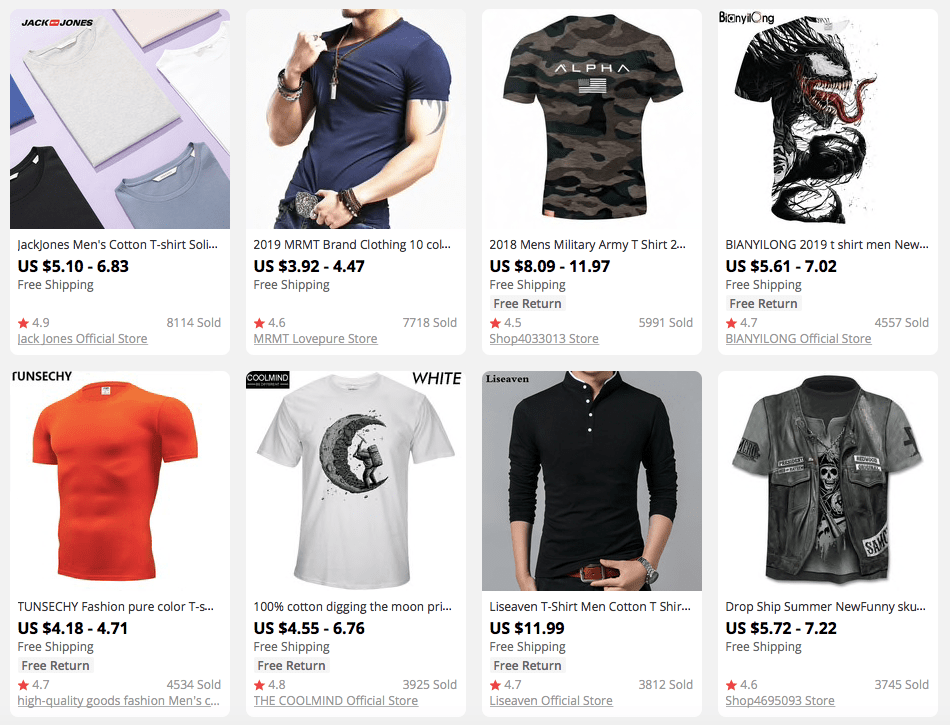
-
Market Research: Conduct thorough market research to understand the size and demographics of your target audience. Use surveys or polls to gather feedback on your niche ideas and design concepts.
-
Test Products: Create a few sample designs and list them on a platform like Etsy or Shopify. Monitor engagement, views, and sales to gauge interest. This can provide valuable insights into the market demand for your niche.
-
Analyze Competitors: Look at competitors in your niche. Assess their product offerings, pricing strategies, and customer reviews. Identify what they are doing well and where there might be opportunities for improvement.
-
Social Media Engagement: Use social media to test your niche. Share your designs and solicit feedback. Engaging with potential customers can help you refine your concepts and understand their preferences.
-
Google Trends and Keywords: Utilize Google Trends to check the search volume for keywords related to your niche. A consistent or growing search volume indicates demand, while declining trends may signal a saturated or waning market.
Methods for Finding Winning Products
After identifying and validating your niche, the next step is to find winning products that can resonate with your audience. Here are some effective methods to discover these products:
-
Supplier Marketplaces: Utilize platforms like Printify and Printful to explore their product catalogs. Look for trending designs, popular styles, and customer favorites. These platforms often showcase best-sellers, which can inspire your own designs.
-
Social Media Trend Tools: Leverage tools like BuzzSumo or TrendSpottr to identify trending topics and products on social media. Keep an eye on viral t-shirt designs or campaigns that capture attention.
-
Google Trends: Use Google Trends to see which t-shirt designs or themes are gaining popularity. You can filter by region and time frame to find local trends or seasonal interests.
-
Customer Feedback: Analyze customer reviews and feedback on competitors’ products. Look for common themes regarding what customers love or dislike. This information can help you refine your designs and identify features that appeal to your audience.
-
Price Point Consideration: Choose products that fall within a reasonable price range. Generally, t-shirts priced between $20 to $30 are well-received by customers. Ensure your cost allows for a healthy profit margin after accounting for production and shipping.
-
Problem-Solving Designs: Focus on designs that solve a problem or meet a specific need. For example, t-shirts with motivational quotes can resonate with fitness enthusiasts, while customizable shirts can attract those looking for personalized gifts.
-
Unique Selling Proposition (USP): Identify what makes your t-shirts unique. This could be eco-friendly materials, exclusive designs, or customizable options. A strong USP can help your products stand out in a crowded market.
By following these steps, you can effectively identify a profitable niche and winning products for your t-shirt dropshipping business. Remember, the key to success lies in continuous learning and adapting to market trends. Stay engaged with your audience, listen to their feedback, and refine your offerings to build a brand that resonates with your target market. Happy selling!
Step 2: Choosing the Right Dropshipping Suppliers
Understanding Dropshipping Suppliers
When starting a t-shirt dropshipping business, one of the most critical decisions you’ll make is selecting the right supplier. A reliable supplier can influence your product quality, shipping times, and overall customer satisfaction. In this guide, we’ll explore some of the most popular dropshipping platforms, including AliExpress, CJ Dropshipping, and USA-Based Suppliers, highlighting their advantages and disadvantages. Additionally, we’ll provide a checklist of essential factors to consider when evaluating potential suppliers.
AliExpress
AliExpress is a well-known global marketplace that offers a vast selection of products, including t-shirts. It’s particularly popular among dropshippers due to its extensive inventory and low prices.
Pros:
- Wide Product Range: AliExpress features a vast array of t-shirt designs, styles, and suppliers, allowing you to find unique items to sell.
- Low Prices: Many suppliers offer competitive pricing, making it easy to maintain healthy profit margins.
- No Upfront Costs: You only pay for products after you’ve made a sale, which minimizes financial risk.
Cons:
- Long Shipping Times: Shipping can take several weeks, particularly for customers in the U.S. or Europe, which may lead to dissatisfaction.
- Variable Quality: Product quality can vary significantly between suppliers, making it essential to vet your suppliers carefully.
- Limited Customer Support: AliExpress does not offer extensive support for dropshippers, so you may need to troubleshoot issues independently.
CJ Dropshipping
CJ Dropshipping is a newer player in the dropshipping space, focusing on providing a streamlined experience for e-commerce entrepreneurs. They offer a variety of products, including custom t-shirts.
Pros:
- Fast Shipping: CJ Dropshipping has warehouses in various locations, including the U.S., allowing for quicker shipping times compared to AliExpress.
- Custom Branding Options: They offer services like custom packaging and branding, which can help you build your brand identity.
- Quality Control: CJ provides quality inspection services to ensure that the products you sell meet your standards.
Cons:
- Learning Curve: The platform can be more complex to navigate than AliExpress, particularly for beginners.
- Higher Prices: While quality is generally better, prices can be higher than those found on AliExpress, which may impact your profit margins.
- Limited Product Range: While CJ Dropshipping offers a good selection, it may not be as extensive as AliExpress.
USA-Based Suppliers
Choosing a USA-based supplier for your t-shirt dropshipping business can have significant advantages, particularly in terms of shipping times and customer satisfaction.
Pros:
- Faster Shipping: Domestic suppliers typically offer much quicker shipping times, often within 2-5 business days, which can lead to higher customer satisfaction.
- Better Communication: Working with suppliers in your time zone can facilitate better communication and quicker resolutions to issues.
- Higher Quality Control: Many U.S. suppliers maintain strict quality control standards, ensuring that the products you sell are of high quality.
Cons:
- Higher Costs: Products from U.S. suppliers are generally more expensive than those from overseas, which can affect your pricing strategy.
- Limited Selection: The range of products available from U.S. suppliers may not be as extensive as that of international suppliers.
- Minimum Order Requirements: Some U.S. suppliers may have minimum order quantities, which can be a barrier for new dropshippers.
What to Look for in a Good Supplier
Selecting the right dropshipping supplier is crucial for the success of your t-shirt business. Here’s a checklist to help you evaluate potential suppliers effectively:
-
Communication: Ensure that the supplier is responsive and communicates clearly. Prompt responses to inquiries can save you time and prevent misunderstandings.
-
Shipping Times: Look for suppliers with reasonable shipping times. The faster your products reach customers, the happier they will be, leading to better reviews and repeat business.
-
Product Quality: Order samples to evaluate the quality of products before committing. This step is essential to ensure that you’re offering items that meet your standards.
-
Return Policies: Understand the supplier’s return and refund policies. A good supplier should have clear procedures for handling returns and exchanges, which protects your business and your customers.
-
Pricing Structure: Analyze the pricing structure to ensure that you can maintain a healthy profit margin. Be wary of hidden fees that could eat into your profits.
-
Branding Options: If brand identity is important to you, check if the supplier offers custom branding options, such as labels, packaging, and inserts.
-
Integration Capabilities: Ensure that the supplier can integrate seamlessly with your e-commerce platform (like Shopify or WooCommerce) for a streamlined order processing experience.
-
Reviews and Reputation: Research the supplier’s reputation by reading reviews from other dropshippers. A good track record can provide peace of mind.
-
Fulfillment Capabilities: Look for suppliers that can handle your order volume and have systems in place to manage inventory efficiently.
-
Product Range: Choose suppliers that offer a wide variety of t-shirt styles and designs, allowing you to cater to different customer preferences.
Conclusion
Choosing the right dropshipping supplier is a pivotal step in launching your t-shirt business. Each platform has its unique benefits and drawbacks, and understanding these will help you make an informed decision. Remember to assess your specific business needs, such as shipping speed, product quality, and customer service, when selecting a supplier. With the right partner, you can build a successful dropshipping business that meets your customers’ needs while allowing you to focus on growth and brand development.
Step 3: Building Your Online Store
Setting Up Your Online Store for T-Shirt Dropshipping
Starting your own t-shirt dropshipping business can be an exciting venture, especially when you leverage the power of an online store. In this section, we will guide you through the essential steps to set up your online store using Shopify, the most popular e-commerce platform, while also mentioning WooCommerce as an alternative. Let’s dive into the process!
1. Choosing a Plan
The first step in setting up your online store is selecting a Shopify plan that suits your business needs. Shopify offers several pricing tiers, including:
- Basic Shopify: Ideal for new entrepreneurs, this plan gives you access to essential features, including an online store, unlimited products, and 24/7 support.
- Shopify: This mid-tier plan includes advanced reporting and professional reports, which can help you analyze your sales and customer data.
- Advanced Shopify: For those looking to scale their business, this plan offers advanced features, including third-party calculated shipping rates and more detailed reporting.
Start with the Basic Shopify plan, which provides all the necessary tools for a budding t-shirt business. You can always upgrade later as your business grows.
2. Picking a Theme
Your online store’s theme is crucial for creating an engaging shopping experience. Shopify offers a range of free and paid themes that you can customize to fit your brand’s identity.
- Explore the Theme Store: Visit the Shopify Theme Store to browse through various themes. Look for a theme that’s visually appealing, responsive (mobile-friendly), and easy to navigate.
- Customization: Once you select a theme, customize it to reflect your brand colors, fonts, and imagery. Ensure that your theme has a clean layout that highlights your t-shirt designs effectively.
3. Setting Up Essential Pages
To build trust with your customers and provide them with necessary information, you should create several essential pages. Here’s a breakdown of what you need:
- About Us: Share your story, mission, and what makes your t-shirt designs unique. This helps build a connection with potential customers.
- Contact Page: Include a contact form, email address, or phone number so customers can easily reach you with inquiries.
- Policies: Clearly outline your return policy, shipping policy, and privacy policy. Transparency in these areas can help alleviate customer concerns and build trust.
Use Shopify’s built-in page editor to create these pages quickly. You can find templates to help guide you in crafting professional and effective content.
4. Installing Key Apps
To enhance the functionality of your online store, you’ll want to install essential apps. Here are a few recommendations:
- Import Tools: Apps like DSers or CJ Dropshipping allow you to import products from various suppliers directly to your Shopify store. These tools simplify the process of adding new t-shirt designs and managing your inventory.
- Print-on-Demand Services: Connect with platforms like Printful or Printify to automate order fulfillment. These services handle printing and shipping directly to your customers, which is ideal for dropshipping.
- Marketing Tools: Consider apps like Klaviyo for email marketing and Oberlo for product sourcing. These can help you automate your marketing efforts and grow your customer base.
To install apps, navigate to the Shopify App Store, search for the desired app, and click “Add app” to integrate it with your store.
5. Setting Up Payment Gateways
Having a reliable payment system is crucial for your online store. Shopify supports various payment gateways, allowing you to accept credit cards, PayPal, and other payment methods.
- Shopify Payments: This is the easiest way to accept payments on your store, as it integrates seamlessly with Shopify. You won’t incur transaction fees, making it a cost-effective option.
- Third-Party Payment Processors: If you prefer to use other payment processors like PayPal, Stripe, or Authorize.net, you can easily set them up in your Shopify settings. Just keep in mind that these may incur additional transaction fees.
To set up payment gateways, go to your Shopify admin, click on “Settings,” then “Payments,” and follow the prompts to configure your preferred payment options.
Brief Mention of WooCommerce
While Shopify is a fantastic choice for beginners due to its user-friendly interface, WooCommerce is another viable alternative, especially if you prefer more control over your store. WooCommerce is a plugin for WordPress, offering flexibility and customization options. However, it may require more technical knowledge to set up compared to Shopify.
Conclusion
Setting up your online store for t-shirt dropshipping doesn’t have to be overwhelming. By following these steps—choosing the right plan, picking an appealing theme, creating essential pages, installing key apps, and setting up payment gateways—you can create a professional and functional store that attracts customers and drives sales. Remember, the journey of entrepreneurship is a marathon, not a sprint. Stay focused, keep learning, and adapt as you grow. Good luck with your t-shirt dropshipping business!
Step 4: Marketing Your Dropshipping Business to Get Sales
Social Media Marketing (TikTok & Instagram)
Social media platforms like TikTok and Instagram are essential for marketing your t-shirt dropshipping business. They offer visual appeal and a vast audience that can help you build brand awareness and drive sales. Here are some actionable tips to get you started:
-
Create Engaging Content
Use high-quality images and videos to showcase your t-shirts. Consider creating short videos that highlight the design process, customer testimonials, or styling tips. For example, a time-lapse video of a design coming to life can captivate viewers on TikTok. -
Utilize Influencer Marketing
Partner with micro-influencers in your niche. They often have highly engaged audiences and can promote your t-shirts authentically. For instance, you could send free samples to influencers in the fashion space and ask them to share their honest reviews. This approach can lead to organic reach and sales. -
Leverage User-Generated Content
Encourage your customers to share photos wearing your t-shirts and tag your brand. You can incentivize this by running a contest or offering discounts on future purchases. Reposting this content on your social media feeds can create a community feel and establish credibility. -
Use Hashtags Strategically
Research and use relevant hashtags to increase the visibility of your posts. Mix popular hashtags with niche-specific ones to reach a broader audience while targeting your ideal customers. For example, hashtags like#Streetwearand#GraphicTeescan help attract attention from the right demographic. -
Engage with Your Audience
Don’t just post and ghost. Respond to comments, engage with followers through polls or questions in your Stories, and create a dialogue. Building a relationship with your audience can lead to increased loyalty and repeat purchases.
Paid Advertising (Facebook/Instagram Ads)
Paid advertising on platforms like Facebook and Instagram can significantly boost your visibility and drive targeted traffic to your dropshipping store. Here’s how to make the most of it:
-
Define Your Target Audience
Use the detailed targeting options available on Facebook Ads Manager to define your audience based on demographics, interests, and behaviors. For instance, if you sell eco-friendly t-shirts, target users interested in sustainability and eco-conscious living. -
A/B Testing Your Ads
Create multiple versions of your ads to see which performs best. Test different headlines, images, and calls to action (CTAs). For example, you might try one ad featuring a model wearing your t-shirt versus another showcasing the t-shirt alone. Analyze the results and optimize based on what works. -
Utilize Retargeting Ads
Set up retargeting campaigns to reach users who have previously visited your site but didn’t make a purchase. You can remind them of their interest with ads featuring the products they viewed. This strategy can significantly increase conversion rates. -
Incorporate Video Ads
Video ads tend to have higher engagement rates. Create short, engaging videos that highlight your t-shirts in action, showcase customer reviews, or tell the story behind your brand. Consider using storytelling techniques to connect emotionally with your audience. -
Optimize Your Landing Pages
Ensure that the landing pages for your ads are optimized for conversions. They should be visually appealing, load quickly, and clearly showcase the product with a strong CTA. A seamless user experience can significantly improve your ad performance.
Search Engine Optimization (SEO)
SEO is a long-term strategy that can help your dropshipping store gain organic traffic from search engines. Here are some actionable tips to enhance your SEO efforts:
-
Keyword Research
Identify relevant keywords related to your t-shirt designs and niche. Use tools like Google Keyword Planner or Ubersuggest to find keywords with a good search volume and low competition. For example, if you sell graphic tees, keywords like “funny graphic t-shirts” or “custom t-shirts for events” may be beneficial. -
Optimize Product Descriptions
Write unique, keyword-rich descriptions for each product. Avoid generic descriptions and focus on the features, benefits, and unique selling points of your t-shirts. Use engaging language that resonates with your target audience. -
Create Quality Content
Start a blog on your website that provides valuable content related to your niche. Topics could include styling tips, t-shirt care instructions, or the inspiration behind your designs. Quality content can attract organic traffic and establish your authority in the market. -
Improve Site Speed and Mobile Responsiveness
Ensure your website loads quickly and is optimized for mobile devices. Google prioritizes user experience, and a slow or unresponsive site can lead to high bounce rates. Tools like Google PageSpeed Insights can help you assess and improve your site’s performance. -
Build Backlinks
Aim to get backlinks from reputable websites in your niche. Guest blogging, collaborations, or being featured in online publications can help boost your site’s authority and improve search rankings. Reach out to blogs or websites that align with your brand for potential collaboration opportunities.
Email Marketing
Email marketing is a powerful tool for nurturing relationships with your customers and driving repeat sales. Here’s how to effectively use email marketing for your dropshipping business:
-
Build Your Email List
Start collecting emails from day one. Use pop-ups or offer incentives like discounts or exclusive designs in exchange for email subscriptions. For example, you could offer a 10% discount on the first purchase for signing up. -
Segment Your Audience
Use segmentation to tailor your emails based on customer behavior, purchase history, and preferences. For instance, send targeted emails featuring new t-shirt designs to customers who previously bought graphic tees, increasing the likelihood of additional sales. -
Create Engaging Newsletters
Design visually appealing newsletters that showcase new arrivals, promotions, and styling tips. Use engaging subject lines to increase open rates. For example, “New Designs Just Dropped – Don’t Miss Out!” can create urgency and excitement. -
Automate Your Campaigns
Set up automated email sequences for welcome emails, abandoned cart reminders, and post-purchase follow-ups. Automation can save you time while ensuring your customers receive timely and relevant communications. -
Analyze and Optimize
Regularly review your email marketing metrics, such as open rates, click-through rates, and conversions. Use this data to refine your approach. For example, if you notice that certain subject lines perform better, incorporate similar language into future emails.
By implementing these marketing strategies, you’ll be well on your way to building a successful t-shirt dropshipping business. Remember, consistency is key, and don’t hesitate to experiment and adapt your approach as you learn what works best for your audience. Good luck!
Common Mistakes to Avoid as a Beginner
1. Choosing a Bad Niche
One of the most critical mistakes beginners make is selecting a niche that is either too broad or overly saturated. A poorly defined niche can lead to intense competition and low customer interest.
Solution: Conduct thorough market research to identify specific interests or trends that resonate with your target audience. Use tools like Google Trends or social media insights to find gaps in the market. Aim for a niche that balances demand and competition, allowing you to stand out with unique designs or themes.
2. Not Testing Products
Jumping into selling without testing your products can result in wasted time and resources. Beginners often assume that because they like a design, everyone else will too.
Solution: Before launching your entire collection, test a few designs with a small audience. Use social media polls or run a targeted ad campaign to gauge interest. This will help you identify which designs resonate with potential customers and adjust your offerings accordingly.
3. Poor Customer Service
Customer service can make or break your business. Beginners often underestimate its importance, leading to negative reviews and lost customers. A lack of responsiveness can frustrate customers and tarnish your brand reputation.
Solution: Establish clear communication channels and set expectations for response times. Utilize automated email responses for common inquiries and consider using chatbots for immediate assistance. Always prioritize customer satisfaction by addressing issues promptly and professionally.
4. Ignoring Shipping Times
Many beginners overlook the impact of shipping times on customer satisfaction. Long or unclear shipping times can lead to frustrated customers and increased returns.
Solution: Choose a reliable dropshipping partner that provides transparent shipping times. Communicate these timelines clearly on your website and during the checkout process. Consider offering express shipping options or providing incentives for customers willing to wait longer for lower shipping costs.
5. Unrealistic Profit Expectations
New entrepreneurs often have inflated expectations about profits, believing that dropshipping is a quick path to wealth. This misconception can lead to disappointment and hasty decision-making.
Solution: Develop a realistic business plan that includes all potential costs, such as production, shipping, marketing, and platform fees. Understand your profit margins and set achievable sales goals. Focus on building your brand and customer base over time rather than seeking immediate financial success.
6. Failing to Build a Brand
Many beginners treat dropshipping as a mere transaction, neglecting the importance of branding. A lack of branding can make it difficult to attract and retain customers.
Solution: Invest time in creating a strong brand identity, including a memorable logo, consistent color scheme, and a unique voice. Use social media and content marketing to share your brand story and connect with your audience. Building a brand fosters customer loyalty and encourages repeat purchases.
7. Overcomplicating the Setup
Beginners often complicate their store setup by trying to include too many features or products from the start. This can lead to confusion and overwhelm.
Solution: Start simple. Focus on a few high-quality products and a user-friendly website. Once you establish a steady sales flow, gradually expand your product range and features. This approach allows you to refine your operations and understand your customers better.
8. Not Utilizing Analytics
Many newcomers neglect to use analytics tools to track their performance. Without data, it’s challenging to understand what’s working and what needs improvement.
Solution: Use analytics tools offered by your e-commerce platform (like Shopify or WooCommerce) to monitor sales, traffic sources, and customer behavior. Regularly review this data to make informed decisions about marketing strategies, product offerings, and customer engagement.
9. Ignoring Marketing Strategies
Some beginners assume that simply launching their store will attract customers. In reality, effective marketing is essential for driving traffic and sales.
Solution: Develop a comprehensive marketing plan that includes social media marketing, email campaigns, and search engine optimization (SEO). Experiment with different strategies and allocate a budget for paid ads to reach a broader audience. Consistent marketing efforts are key to building brand awareness and generating sales.
10. Neglecting Legal Considerations
Many beginners overlook the legal aspects of running a dropshipping business, which can lead to future complications. This includes not understanding tax obligations or copyright issues related to designs.
Solution: Research the legal requirements for your business, including sales tax and intellectual property rights. Consider consulting with a legal expert to ensure you comply with all regulations. This proactive approach will save you time and resources in the long run, allowing you to focus on growing your business.
By avoiding these common mistakes, you’ll be better positioned to launch and grow a successful t-shirt dropshipping business. Remember, every entrepreneur faces challenges, but learning from these pitfalls can significantly enhance your chances of success.
Frequently Asked Questions (FAQs) about t-shirt dropshipping
1. What is t-shirt dropshipping, and how does it work?
T-shirt dropshipping is a business model where you sell custom-designed t-shirts without holding any inventory. When a customer places an order on your online store, the t-shirt is printed and shipped directly from a third-party supplier. This means you can focus on marketing and growing your brand without the overhead costs of managing inventory.
2. How much money do I need to start a t-shirt dropshipping business?
Starting a t-shirt dropshipping business can be done with minimal investment. You can get started for as little as $100 to $300, which typically covers the costs of setting up a website, purchasing a domain name, and initial marketing efforts. Many platforms like Printify and Printful are free to join, allowing you to test your designs without upfront inventory costs.
3. Do I need to register a company to start dropshipping t-shirts?
While it’s not mandatory to register a business to start dropshipping, doing so can provide legal protections and help you build credibility with customers. Depending on your country or state, you may need a business license or a sales tax permit. Research local regulations to ensure compliance and consider registering your business as a sole proprietorship or LLC for added protection.
4. How do I handle returns and refunds?
Handling returns in a dropshipping model can be a bit different than traditional retail. Most dropshipping suppliers have specific return policies, so it’s essential to familiarize yourself with them. Typically, customers can return items if they’re defective or not as described. You’ll need to communicate your return policy clearly on your website and ensure that your suppliers can handle returns efficiently.
5. What are the best platforms for t-shirt dropshipping?
There are several excellent platforms for t-shirt dropshipping. Some of the most popular include:
– Printful: Known for high-quality products and a wide range of printing options.
– Printify: Offers a vast selection of customizable products and competitive pricing.
– Gooten: Tailored for scaling businesses with various integrations.
– CustomCat: Features unique printing methods and excellent customer support.
Choose a platform that aligns with your business goals and offers the features you need.
6. How can I market my t-shirt dropshipping store?
Marketing your t-shirt dropshipping store effectively is crucial for success. Here are some strategies to consider:
– Social Media: Utilize platforms like Instagram, Facebook, and TikTok to showcase your designs and engage with potential customers.
– Email Marketing: Build an email list and send newsletters featuring new designs, promotions, and updates.
– Influencer Collaborations: Partner with influencers in your niche to promote your t-shirts to their audience.
– Paid Advertising: Consider using Facebook Ads or Google Ads to reach a broader audience.
7. What design tools should I use for creating t-shirt graphics?
You don’t need to be a professional designer to create stunning t-shirt graphics. Here are some user-friendly tools:
– Canva: Offers a drag-and-drop interface with templates and design elements.
– Adobe Express: Provides powerful design capabilities with a range of templates.
– Placeit: Allows you to create mockups of your designs on t-shirts easily.
– Printful’s Design Maker: Specifically for creating designs for products you’ll sell through their platform.
8. How do I choose the right t-shirt dropshipping supplier?
Choosing the right supplier is vital for your business. Consider the following factors:
– Product Quality: Order samples to evaluate the quality of the t-shirts.
– Pricing: Compare costs across different suppliers to ensure competitive pricing.
– Shipping Times: Check average fulfillment and shipping times to meet customer expectations.
– Customization Options: Look for suppliers that offer various printing methods and branding options.
9. Can I sell my t-shirt designs on multiple platforms?
Absolutely! You can sell your t-shirt designs on multiple platforms, such as your own eCommerce website, Etsy, Amazon, and social media channels. Many dropshipping suppliers like Printify and Printful offer integrations with various eCommerce platforms, making it easy to manage orders from one central location.
10. What are some common mistakes to avoid when starting a t-shirt dropshipping business?
Avoiding common pitfalls can save you time and money. Here are a few mistakes to watch out for:
– Neglecting Market Research: Understand your target audience and what designs resonate with them.
– Poor Website Design: Ensure your website is user-friendly and visually appealing to build trust with customers.
– Ignoring Customer Service: Provide excellent customer support to address inquiries and resolve issues promptly.
– Not Testing Designs: Before launching, test different designs and marketing strategies to see what works best.
By addressing these questions, you can establish a solid foundation for your t-shirt dropshipping business and increase your chances of success. Remember, persistence and adaptability are key!
Conclusion: Your Next Steps to Launching Your Business
Key Steps to Launch Your T-Shirt Dropshipping Business
Starting your t-shirt dropshipping business is an exciting journey that requires a clear roadmap and commitment. Here are the essential steps to get you started:
-
Choose Your Niche: Identify a specific target market or theme that resonates with your potential customers. This could be anything from humorous quotes to unique graphic designs. Understanding your audience will help you create compelling products.
-
Select a Reliable Dropshipping Partner: Research and choose a print-on-demand service that aligns with your needs. Consider factors like product quality, pricing, fulfillment speed, and available integrations. Popular options include Printify and Printful, each offering unique benefits.
-
Create Your Brand: Develop a memorable brand identity, including a name, logo, and consistent visual style. This will set you apart from competitors and foster customer loyalty.
-
Design Your Products: Use design tools provided by your chosen dropshipping partner to create eye-catching t-shirt designs. Ensure your designs are original and cater to your target audience’s preferences.
-
Set Up Your Online Store: Choose a platform that suits your business model, such as Shopify, Etsy, or WooCommerce. Customize your store to reflect your brand and make it user-friendly.
-
Market Your Business: Implement marketing strategies to drive traffic to your store. Utilize social media, content marketing, and paid advertising to reach your target audience effectively.
-
Monitor and Adjust: Track your sales, customer feedback, and website analytics. Use this data to refine your product offerings and marketing strategies continually.
Remember, dropshipping is not a get-rich-quick scheme; it’s a legitimate business that requires time, learning, and effort. Success won’t come overnight, but with perseverance and dedication, you can build a thriving online business.
Take Action Today!
Now that you have a clear plan, it’s time to take the first step. Start by researching your niche and selecting your dropshipping partner. Every great journey begins with a single step—take yours today! Your dream of running a successful t-shirt dropshipping business is within reach. Embrace the challenge, learn continuously, and watch your efforts transform into success!
Important Disclaimer
⚠️ Important Disclaimer
The information provided in this guide is for educational purposes only. Starting a business involves risks, and success is not guaranteed. Please conduct your own thorough research and consider consulting with financial and legal professionals before making any business decisions.

